The spring 2021 edition of the Rolli Days will be held from Friday, May 14 to Sunday, May 16, which, after the fall 2020 edition, will reintroduce the Live&Digital formula: in Genoa it will therefore be possible to return to visit live the Palazzi dei Rolli, a UNESCO World Heritage Site since 2006, and their artistic and architectural treasures. The visits to the Rolli, expertly conducted by the Scientific Disclosers who will accompany the public to 17 palaces (to which 7 villas will be added but only in digital mode), will take place in complete safety and with compulsory reservation (the in-person event may be subject to change in case of changes in the ongoing health emergency and related safety regulations). As for the Digital section, the event will bring the public into the lives and stories of the artists who have made the Genoa of the Palazzi dei Rolli unique in the world: starting from the works preserved in the Civic Collections, a series of unpublished and short videos will tell about the lives, careers and anecdotes about the protagonists of the city’s artistic history.
Villas are the main protagonists of the Digital section of this edition: visitors, through some dedicated videos, will in fact be able to discover some of the most significant urban and suburban villas built by the noble Genoese families, who even in their holiday residences wanted the same beauty, the same splendor, the same refinement as the city palaces. The villas were located immediately outside the heart of the ancient city, now reabsorbed by the urban fabric, or along the coast, both East and West, as far as the Riviera: the journey of these Rolli Days will take us as far as Albissola. A new opportunity to experience with increasing participation the heritage of the city of Genoa, and the monumental fabric that revolves around the Palazzi dei Rolli and the society that built, decorated and enriched them during the hundred years of the Siglo de los Genoveses.
A new edition, then, for the event that twice a year brings Genoa together to celebrate the Palazzi dei Rolli(here is a rich look at their history), a World Heritage Site, by organizing days when many of Genoa’s aristocratic residences open their doors to the public. Visitors can thus discover fascinating architecture, splendid frescoes, important paintings, “fashionable” decorations, and be transported to the splendor of the “Golden Age” of the Genoese. Every year the list of Open Palaces changes and a rich program of initiatives and events takes place around the palaces: each edition has new stories to tell and new experiences to offer to those who want to discover the wonders of Genoa. To learn more, for info and reservations you can visit www.visitgenoa.it where you can find the complete list of open palaces. As every year, alongside the visits to the Palaces conducted by the Science Disclosers that the public can organize independently, there are also tours conducted by professional tour guides from Genoa, licensed by the Region of Liguria. Four routes and ten palaces for a unique experience can be purchased at www.exploratour.it. Rolli Days - Live & Digital - Genoa May 2021 is an event promoted and organized by the City of Genoa, in collaboration with Palazzo Ducale Fondazione per la Cultura, Genoa Chamber of Commerce, Ministry of Cultural Heritage and Activities - Regional Secretariat of Liguria, Association of the Rolli of the Genoese Republic and University of Genoa.
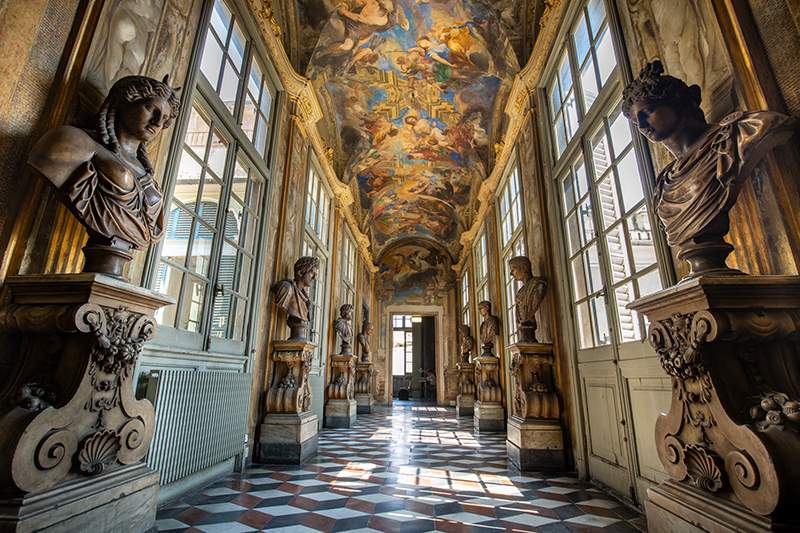 |
| Palazzo Balbi Senarega. Photo by Laura Guida |
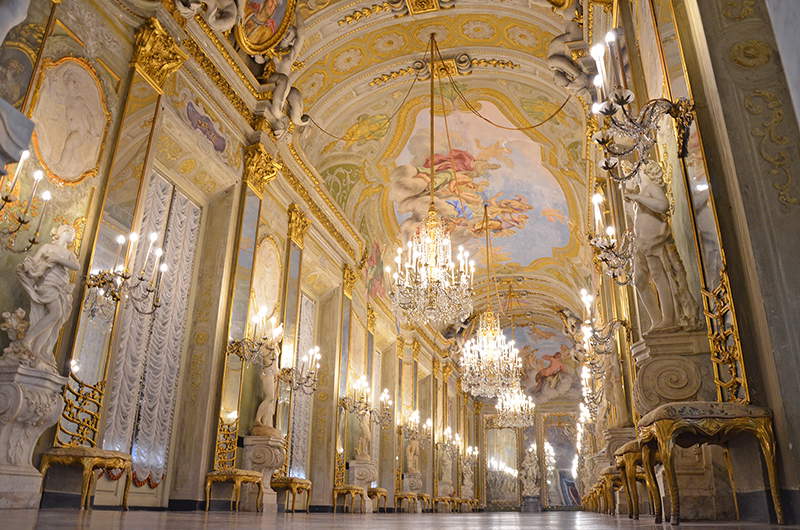 |
| Museum of the Royal Palace, Gallery of Mirrors. Photo by Comune di Genova |
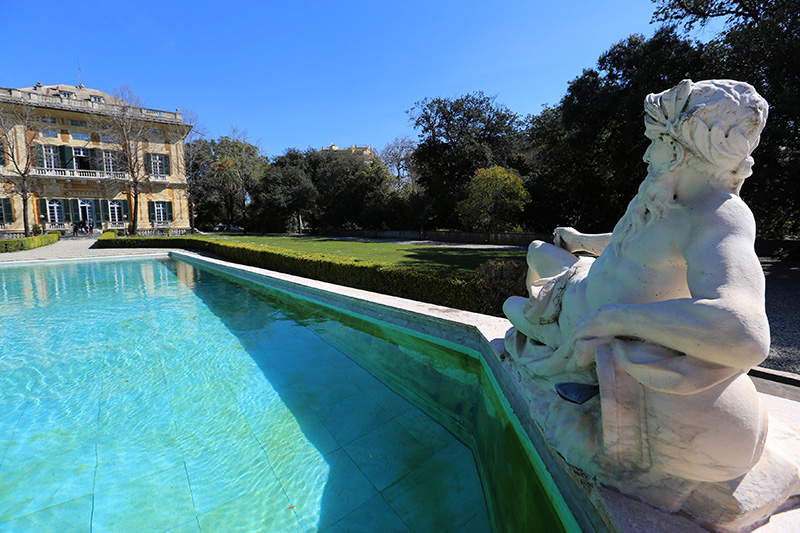 |
| Villa Balbi dello Zerbino. Photo by Fabio Bussalino |
The journey can start right from Albissola Marina, where we visit Villa Durazzo Faraggiana: the rooms of the villa alternate between spaces that recall the best rocaille decoration and the Empire style, wanted by the last owners. But among four-poster beds, musical instruments and precious furnishings, here is the most extraordinary wooden sculpture of the Genoese Baroque: the Narcissus mirror executed by Filippo Parodi(you can read a long in-depth article on this masterpiece at this link). We continue with Villa Duchessa di Galliera: located in the far west of Genoa and linked to the figure of Maria Brignole Sale De Ferrari duchess of Galliera, an extraordinary benefactress of the city, the villa represents one of the most important testimonies of how Genoese suburban buildings evolved over time. The highly refined Sala delle Conchiglie, completely covered with this precious material, the historic theater, the Italianate garden and the English-style grove come together in Voltri’s green lung, in a perfect fusion of indoor and outdoor spaces. Third stop is Villa Pallavicino delle Peschiere, whose panorama is described by Charles Dickens as “one of the most charming and delightful views in the world” (the great English writer was a guest there in 1844). Still striking are the extraordinarily well-preserved frescoes by Cambiaso and Bergamasco; as well as the richness of the gardens and the unparalleled quality of one of the few, only five, surviving Polymaterial Caves in Genoa: a treasure chest where shells, colored stones, and ceramic elements create an elegant, fairy-tale world.
We continue with Villa Lomellini Rostan Reggio, located between Pegli and Multedo: with its 16th-century frescoes it originally housed the cultural club of the Accademia degli Addormentati. Its garden between the 18th and 19th centuries was considered one of the most beautiful in Europe, while today the villa is home to Genoa CFC. We then come to Villa Gentile Bickley, whose vicissitudes are closely linked to those of the Cornigliano neighborhood. Villa Bickley represents an important landmark with its stuccoes, frescoes and watchtower from which there is a view of the neighborhood, once the holiday home of the rich aristocrats of the city center. Then there is Villa Gropallo dello Zerbino, the Baroque wonder of a suburban villa: from the frescoed interiors by Domenico Piola and Gregorio De Ferrari to the exteriors, which represent one of the largest private urban parks in Europe. The villa is a Baroque jewel that overlooks the city of Genoa from above. The last stop is Villa Cattaneo Imperiale di Terralba: the undisputed star of this villa is the fresco depicting the Rape of the Sabine Women by Luca Cambiaso, an exceptional painting in terms of quality and state of preservation, which was to become a model for many decorations in Genoese palaces. But the villa has a long history: the Cattaneo della Volta, Imperiale, and Di Negro families lived here, and the King of France Louis XII was hosted here.
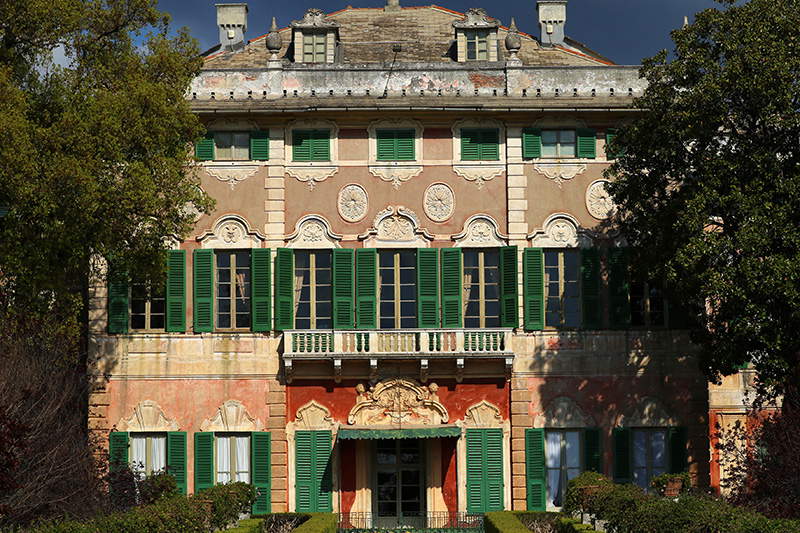 |
| Villa Faraggiana. Photo by Fabio Bussalino |
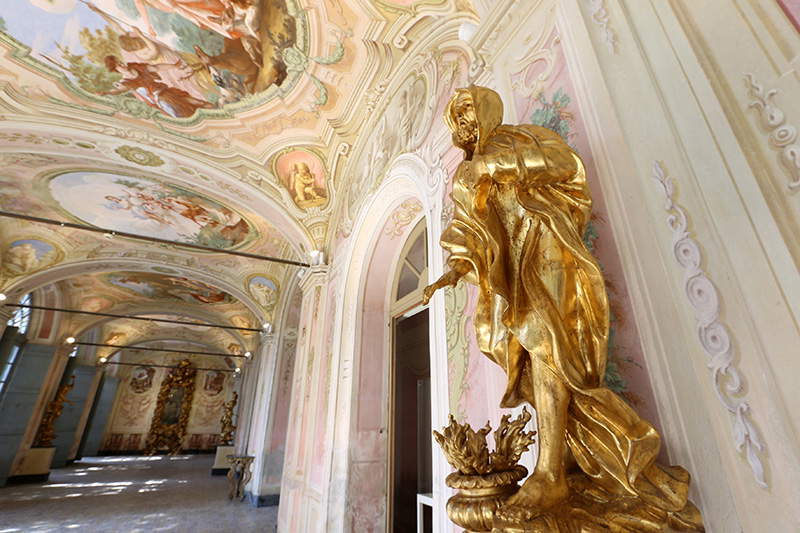 |
| Villa Faraggiana. Photo by Fabio Bussalino |
 |
| Villa delle Peschiere |
With the initiative Ritratti d’autore. History and Stories of the Painters of the Palazzi dei Rolli through the Masterpieces of the Strada Nuova Museums, the spring 2021 edition of the Rolli Days lets the public discover names of artists who return time and again: they are the ones who gave shape and color to the Golden Age of the Genoese. A series of portraits, then, will recount two centuries of an extraordinary artistic history, and the work of artists capable of making Genoa a European cultural capital. The starting point is the splendid works preserved in the collections of the Strada Nuova Museums: a series of videos is dedicated to the paintings and their artists, which will gradually be available on the “Genova more than this” Youtube channel. It begins with Antoon Van Dyck (Antwerp, 1599 - London, 1641), the most important Flemish portraitist of the 17th century, and the video “The relationship between artist and patrons in an exceptional portrait painter.” He is credited with portrayals of kings, dukes and figures of political and other prominence throughout Europe. But in Genoa the artist was at his best, receiving important commissions from the city’s aristocracy. And this is the case with Paolina Adorno and Anton Giulio Brignole Sale, whose portraits are now preserved in the Strada Nuova Museums. To Bernardo Strozzi (Campo Ligure, 1581 - Venice, 1644) is dedicated the video “Cappuccino’s most famous work”: among the most famous Genoese painters without a doubt Bernardo Strozzi is one of those who had the most eventful life. He moved from Genoa to Venice, donned the cassock and opened a flourishing workshop. He was a brilliant and partly revolutionary artist: the painting called The Cook is one of his most iconic works, though among his least obvious.
Pieter Paul Rubens (Siegen, 1577 - 1640) is recognized as “The Father of the Genoese Baroque” (this is also the title of the video): if painters such as Strozzi or Assereto were able to ’break through’ in Genoa, the credit is also and above all due to a foreign painter: Pietro Paolo Rubens. It was in fact he who introduced with his works the new Baroque language in the city. A tale that is approached backwards, through the painting depicting Venus and Mars. “The most active artist in the Genoese painting scene” (so the video featuring him), on the other hand, is Domenico Piola (Genoa, 1627 - 1703): his paintings can be found in most Ligurian localities because of his long career and thanks to the collaborations of his workshop, the largest active in Genoa. Piola was not only a painter of canvases, but also an exceptional fresco painter, as shown by his work in palaces, Genoese villas and sketches for the decoration of the vault of the Ducal Palace. Gioacchino Assereto (Genoa, 1600 - 1649) is the protagonist of the video “The Realism of the Genoese Baroque”: the style and technique of one of the main exponents of the Genoese school of painting at the beginning of the 17th century through the analysis of Death of Cato among his most important masterpieces.
We then move on to Domenico Fiasella (Sarzana, 1589 - Genoa, 1669) with “The Grace of Sarzana”: born in Sarzana, the city from which he derives his nickname, Domenico Fiasella moved to Rome for study and then to Genoa, where he produced frescoes and paintings for the city’s most important patrons. These include a beautiful Penitent Magdalene, an all-Baroque testimony to a very recurrent sacred theme among seventeenth-century painters. Then there is Valerio Castello (Genoa, 1624 - 1659) with “The Talent of an Unfortunate Painter. ”What would Valerio Castello have accomplished if he had not died prematurely at the age of 35? We don’t know, what is certain is that the painter was one of the most talented artists active in Genoa in the 17th century, as shown by his frescoes in Palazzo Balbi Senarega and the beautiful painting of the Madonna del Velo preserved in Palazzo Bianco. Space then goes to Giovanni Battista Carlone (Genoa, c. 1603 - Parodi Ligure, c. 1684) with “The experience of a sublime fresco painter”: Basilica dell’Annunziata, Basilica di San Siro, Chiesa del Gesù, are just some of the sites where Carlone gave proof of his skill. Complex and laborious frescoes, impossible to create without precise and well-defined preparatory sketches, such as the one depicting San Siro and the Basilisk, preserved in the Palazzo Bianco. The video “Portrait of an International Painter,” on the other hand, is dedicated to Luca Cambiaso (Moneglia, 1527 - San Lorenzo de El Escorial, 1585), a journey through the history and works of the painter who marked the history of art, Genoese and otherwise, between the Renaissance and Baroque. Discovering the technical and subject innovations of Luca Cambiaso, the painter chosen by Philip II to decorate the monastery of San Lorenzo all’Escorial, starting with his self-portrait preserved in Genoa. The last video is dedicated to Lorenzo De Ferrari (Genoa, c. 1680 - 1744): it is “The preparatory drawings of the most photographed room of the Palazzi dei Rolli.” How was the great fresco in the Sala Dorata of the Palazzo Tobia Pallavicino conceived? Lorenzo De Ferrari’s drawings preserved in the Drawings and Prints Cabinet of Palazzo Rosso through the account of Margherita Priarone, curator of the Strada Nuova Museums.
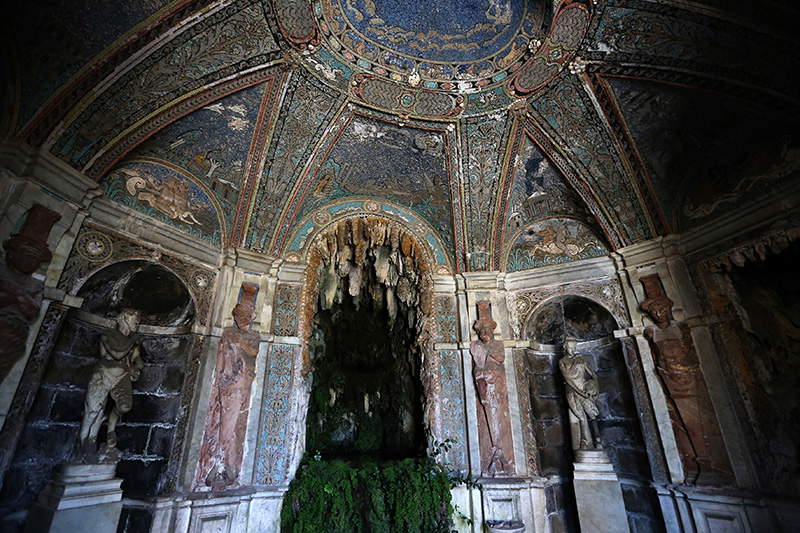 |
| Villa Pallavicino delle Peschiere. Photo by Fabio Bussalino |
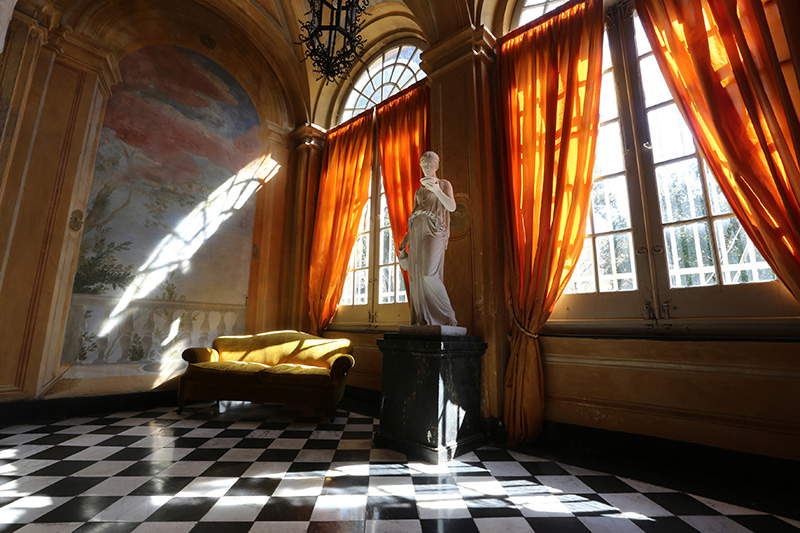 |
| Villa Balbi dello Zerbino. Photo by Fabio Bussalino |
The "Magnifici," as the Genoese aristocrats who owned the Palazzi dei Rolli were called, were descendants of dynasties of merchants and entrepreneurs, always busy minding their own business while filling their residences with masterpieces. Here, then, is another chapter in the history of Genoa, told through a project sponsored by the Genoa Chamber of Commerce: its history of trade and markets, starting from three squares in the historic center (Piazza San Giorgio, Piazza Soziglia and Piazza Fossatello) around which gravitated monuments, churches, palaces and historic stores. The journey starts from Piazza San Giorgio with the video “The Square of the Ancient Forum”: this was the starting point of the metric measurements that gave rise to the names of the Quarto and Quinto districts (four or five Roman miles from here). Trade has always passed through this square overlooking the harbor, even from the time of Genoa’s urban development in Roman times. Piazza San Giorgio is a piece of the Superb city’s history and a good part of this history has lived it along with its stores.
We then move on to Piazza Soziglia, “The beating heart of Genoese commerce”: Piazza Soziglia is the point of convergence of Via degli Orefici, vico del Fieno and the Macelli area. Here, near the old blacksmiths’ field, Campetto, are stores and businesses as varied as they are rich in history. And despite the architectural developments of the historic center over the centuries, the square has never lost its commercial vocation, which still manifests itself in its stores. Third and final stop, Piazza Fossatello with “The Evolution of Commerce among the Palazzi dei Rolli”: from the port’s goods storage warehouses to sculpture stores, from artisans’ workshops to grocery stores. Piazza Fossatello has always been a fundamental crossroads of commercial flows in the city center in a continuous relationship between the evolution of the urban fabric and the city’s economic development.
The Genoese were and are a people of entrepreneurs, innovators, travelers, experimenters: all characteristics that we find in Giorgio Parodi, aero pilot, war hero, co-founder of the Aeroclub of Genoa founder with Carlo Guzzi of Moto Guzzi, the brand destined to become a legend in the world of motorcycling. 2021 marks the centenary of the founding of the company, which was born in Genoa on March 15, 1921, and the centenary of the founding of the Air Force. In collaboration with the Giorgio Parodi Association, Rolli Days will jump into the saddle and an exclusive video will show Genoa as seen from the seat of a motorcycle. Also, during the event, the legendary G.P. (Guzzi-Parodi) 500, the prototype of the first Guzzi motorcycle, will be exceptionally displayed at Palazzo Tursi.
Finally, Genoa is also celebrating through digital content the Nuit Européenne des Muséès, Saturday, May 15, 2021: Andrea Cardinale’s violin accompanies a roundup among the main works of Genoa’s Civic Museums. Ten sites, ten collections to be discovered through the light that illuminates from the dark the details of unique works of art, evidence of a heritage as wide and varied as that of Genoa.
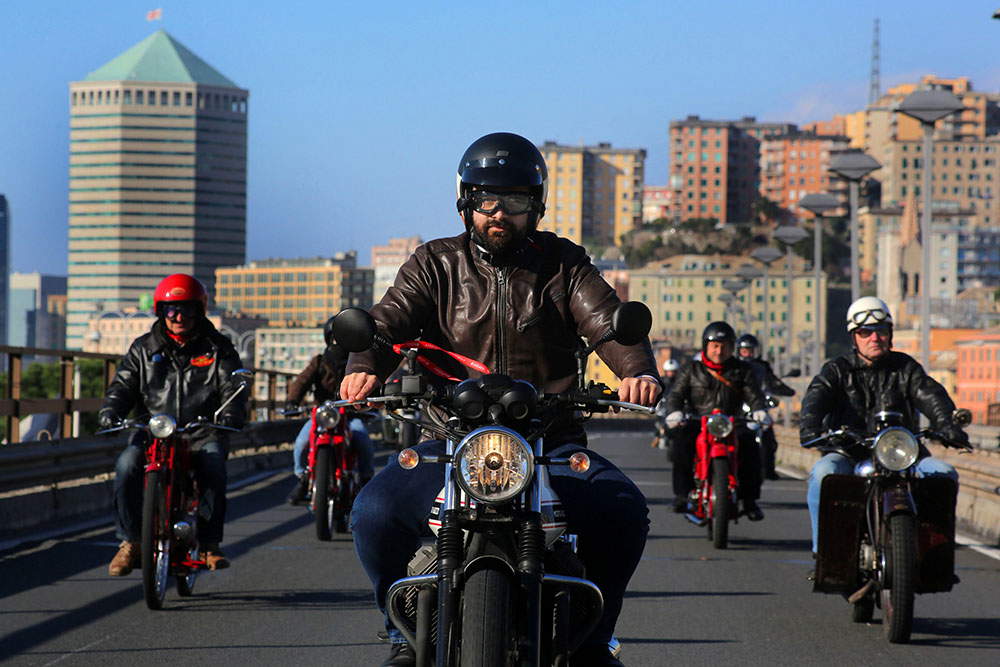 |
| Rolli days by motorcycle |
 |
| Genoa, May 14-16 Rolli Days returns, online and live |
Warning: the translation into English of the original Italian article was created using automatic tools. We undertake to review all articles, but we do not guarantee the total absence of inaccuracies in the translation due to the program. You can find the original by clicking on the ITA button. If you find any mistake,please contact us.